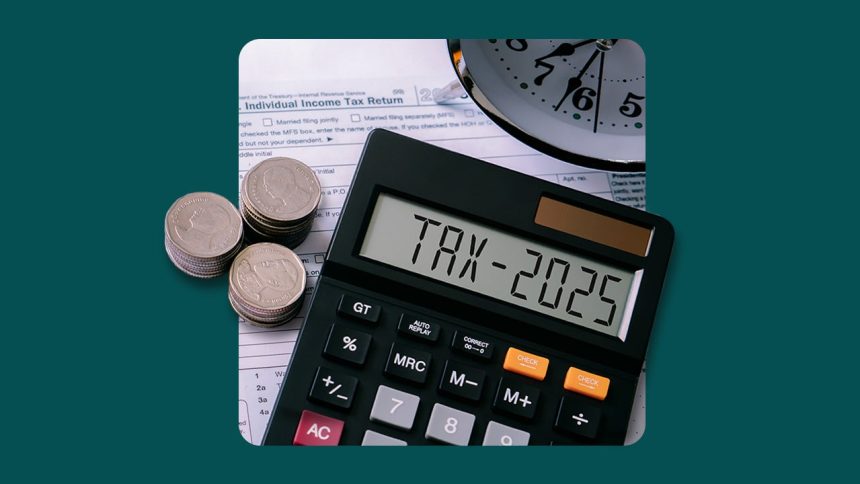The tax filing deadline has come and gone and no doubt you’d rather think about the next summer BBQ — or pretty much anything else — rather than tax planning. But now is a great time to take steps to ensure that the next time the tax deadline rolls around, your bill is as low as possible.
Here are seven steps you can take now to reduce your tax bill and pay the IRS only what you need for 2025.
1. Maximize contributions to your retirement plan
Putting more money into your pre-tax retirement plan has two very sweet benefits: You’re helping your future self by building your savings, and you’re lowering your taxable income today, thus reducing your overall tax bill.
For 2025, you can contribute up to $23,500 to a 401(k) or similar qualified plan, an increase of $500 from the 2024 tax year.
If you’re age 50 or older, you can make catch-up contributions up to the following amounts in 2025:
- Ages 50 to 59 and 64 and older: You can contribute an additional $7,500.
- Ages 60 to 63: You can contribute an additional $11,250.
Another way to reduce your taxable income is by contributing to a traditional IRA. The maximum contribution is $7,000 in 2025 ($8,000 if you’re 50 or older).
There’s just one catch: If you (or your spouse) have access to a workplace retirement plan, then there are income limits on deducting that IRA contribution. (If a workplace retirement plan isn’t available, there are no income limits on deducting IRA contributions.)
If you’re self-employed, you can contribute to a solo 401(k) plan or SEP IRA to lower your taxable income for the year. (Each of these plan types has different contribution limits and eligibility rules.)
2. Sell losing investments
If some of your investments didn’t perform well this year, you may be able to lower your taxable income by selling them — a strategy known as tax-loss harvesting. This involves selling investments at a loss to offset gains from other investments. If your capital losses exceed your gains, you can deduct up to $3,000 of those losses from your ordinary income.
Before selling, it’s wise to review your portfolio and ensure you’re making the right decision for your long-term financial goals. Also, be aware of the wash-sale rule. If you sell an investment at a loss, you can’t repurchase the identical investment within 30 calendar days before or after the sale. Doing so triggers a wash sale, and the IRS will disallow the loss on your current tax return.
3. Defer income
Deferring income to the following year is another strategy that allows you to reduce your taxable income. For example, you can push capital gains into the following year, or ask your employer to delay your year-end bonus. If you’re self-employed, you might be able to hold off on invoicing a client.
But be cautious. The IRS may consider income as received if it’s available to you, even if you haven’t taken physical possession of the cash. For example, if you receive a check in December, but wait until January to deposit it, the IRS will still treat it as income received in December.
4. Sign up for a flexible spending account (FSA)
A flexible spending account (FSA) allows you to make tax-free contributions from your salary to pay for qualified medical expenses and dependent care.
For 2025, you can contribute up to $3,300 to a medical FSA and $5,000 to a dependent care FSA for most taxpayers.
Before deciding how much to contribute, carefully consider your anticipated expenses for the year. Generally, you have to forfeit any unused funds at the end of the year. However, depending on your employer’s plan rules, you may be able to roll over up to $660 into the next tax year or receive an additional 2 ½ month grace period after year-end to use any remaining funds.
5. Open a health savings account (HSA)
Whether provided by your employer or opened independently, a health savings account (HSA) can help reduce your tax bill — but you must have a qualified high-deductible health plan.
Contributions go into the account on a pre-tax basis, thus reducing your taxable income, and withdrawals are tax-free if you use them for qualified medical expenses.
For 2025, the HSA contribution limits are:
- $4,300 for individuals
- $8,550 for familIes
If you’re age 55 or older, you can contribute an additional $1,000 as a catch-up contribution.
Unlike an FSA, HSAs funds can roll over from year to year. And, if you have the resources to pay for health-care costs out of pocket now, you have the option to invest some or all of your HSA funds for the future.
6. Bundle deductible expenses
If you typically don’t have enough deductible expenses to itemize your deductions, a bundling strategy may boost those dollar amounts, allowing you to itemize and potentially reduce your taxable income. Bundling refers to paying upcoming expenses early — before year-end — instead of waiting until the new year.
Some examples include:
For example, you can make a contribution to your favorite charity at the beginning and end of the same year. This can push your total deductions above the standard deduction threshold, allowing you to itemize and reduce your taxable income further.
7. Avoid early withdrawals from your 401(k)
And finally, if you withdraw money from your 401(k) before the age of 59 1/2, you’ll generally face a 10 percent penalty on top of your regular income taxes, unless you qualify for an exception. Some exceptions include first-time home purchases, certain disaster-related expenses and medical emergencies.
For this reason, it’s wise to explore alternative funding options and reserve your 401(k) for retirement whenever possible.
Why we ask for feedback
Your feedback helps us improve our content and services. It takes less than a minute to
complete.
Your responses are anonymous and will only be used for improving our website.
Help us improve our content
Read the full article here
















